-
Car Reviews
- All reviews
- Midsize SUVs
- Small cars
- Utes
- Small SUVs
- Large SUVs
- Large cars
- Sports SUVs
- Sports cars
- Vans
Latest reviews
- Car News
-
Car Comparisons
Latest comparisons
- Chasing Deals
A more handsome design outside, new technology inside and extra power: the ultimate petrol-powered Hyundai Kona is now a more mature package.
At $42,400 before on-road costs, there’s no avoiding that the 2021 Hyundai Kona N Line Premium is on the pricier side for a mainstream small SUV.
However, this new variant of Hyundai’s second-best selling vehicle arrives for 2021 wearing a more coherent, sophisticated design and packaged with a bunch of more sophisticated technology within a cabin that’s more plush than before.
Named for a Hawaiian island, the Hyundai Kona is a firm favourite among Australians shopping for a compact crossover. This SUV represents a considerable 23 per cent of Hyundai’s local sales, and while one in five is a fleet-sale base model, at the other end of the revamped range sits the N Line Premium.
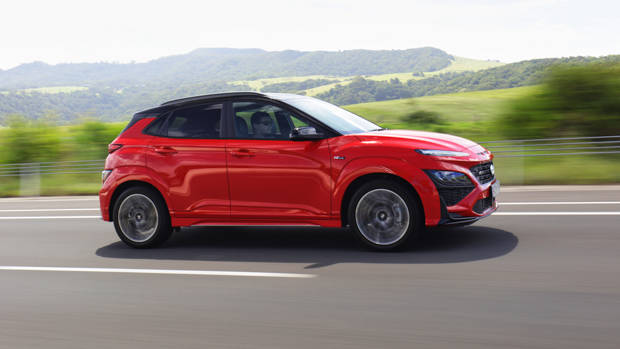
Pitched as a sports-luxury grade, this flagship Kona is more or less a raised i30 N Line Premium ($37,290) – though the Kona sees a $5,110 SUV ‘tax’ slapped on top of the i30’s tag by its maker.
That said, this is the last stop in the Kona range before you step into the much more expensive, fully-electric versions.
You’ll identify the Kona N Line Premium immediately as being the variant with all the fruit. Handsome 18-inch wheels wrapped in Continental PremiumContact tyres lead the package, while the black cladding of the lower-end variants is body-coloured here.
Unlike the more affordable Kona N Line ($36,300), the Premium picks up LED headlights, a fully digital instrument cluster, a head-up display, heated and ventilated power adjustable front seats, heated rear seats, a sunroof, and ambient lighting – plus front parking sensors.
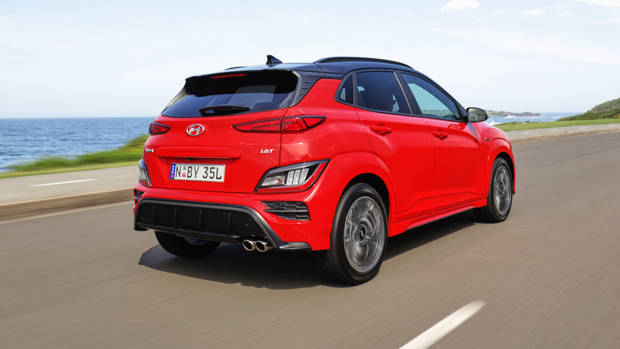
Hyundai’s small cars typically drive with real verve, showing the dividends that a local Australian ride and handling tuning programme can have.
That’s certainly the case with the Kona N Line, which carries over the same suspension tune that turbocharged versions of the Kona launched with back in 2017. There was no need for a big change, with recent validation work confirming the package was still up to the job.
Broadly, we agree. While the new ‘N Line’ positioning of the turbocharged Kona grades indicates a level of sportiness, the suspension on these cars was already fairly firm and focussed. Later this year, a properly hard-edged Kona N hot SUV will arrive for those wanting a stiffer crossover.
There is no doubt that the Kona N Line, or N Line Premium, is the version of this SUV to buy if you care about driving dynamics – and if your budget can stretch to them.
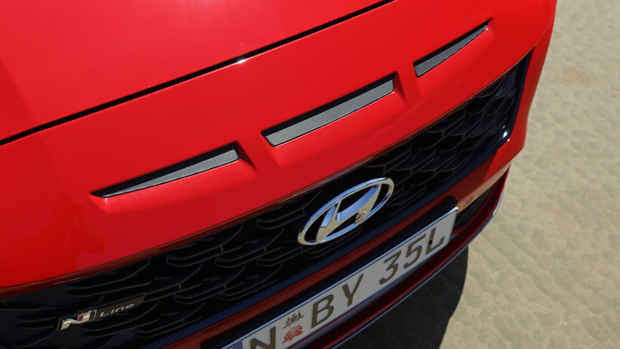
Among the Kona lineup, the N Line twins uniquely add three desirable dynamic inclusions: a torquey turbo engine, an AWD system, and – most critically – an independent rear suspension that is way more refined than the basic torsion beam rear end in the non-N Line versions.
As driving enthusiasts, we would go as far as to claim that the N Line’s superior suspension is reason enough to try to stretch to it. They may look sportier – and they are – but they are also more comfortable and refined.
If the budget can’t stretch to a Kona N Line, we suggest buying the i30 N Line hatchback that shares all the Kona’s key features, handles even better, and kicks off at under thirty grand – quite a steal!
Under the Kona N Line’s bonnet is a 1.6-litre turbocharged petrol four-cylinder engine making 146kW of power and 265Nm of torque. That’s 16kW more than last year, but because the torque and the tune of the seven-speed dry dual-clutch automatic remain the same, the difference is quite imperceptible.
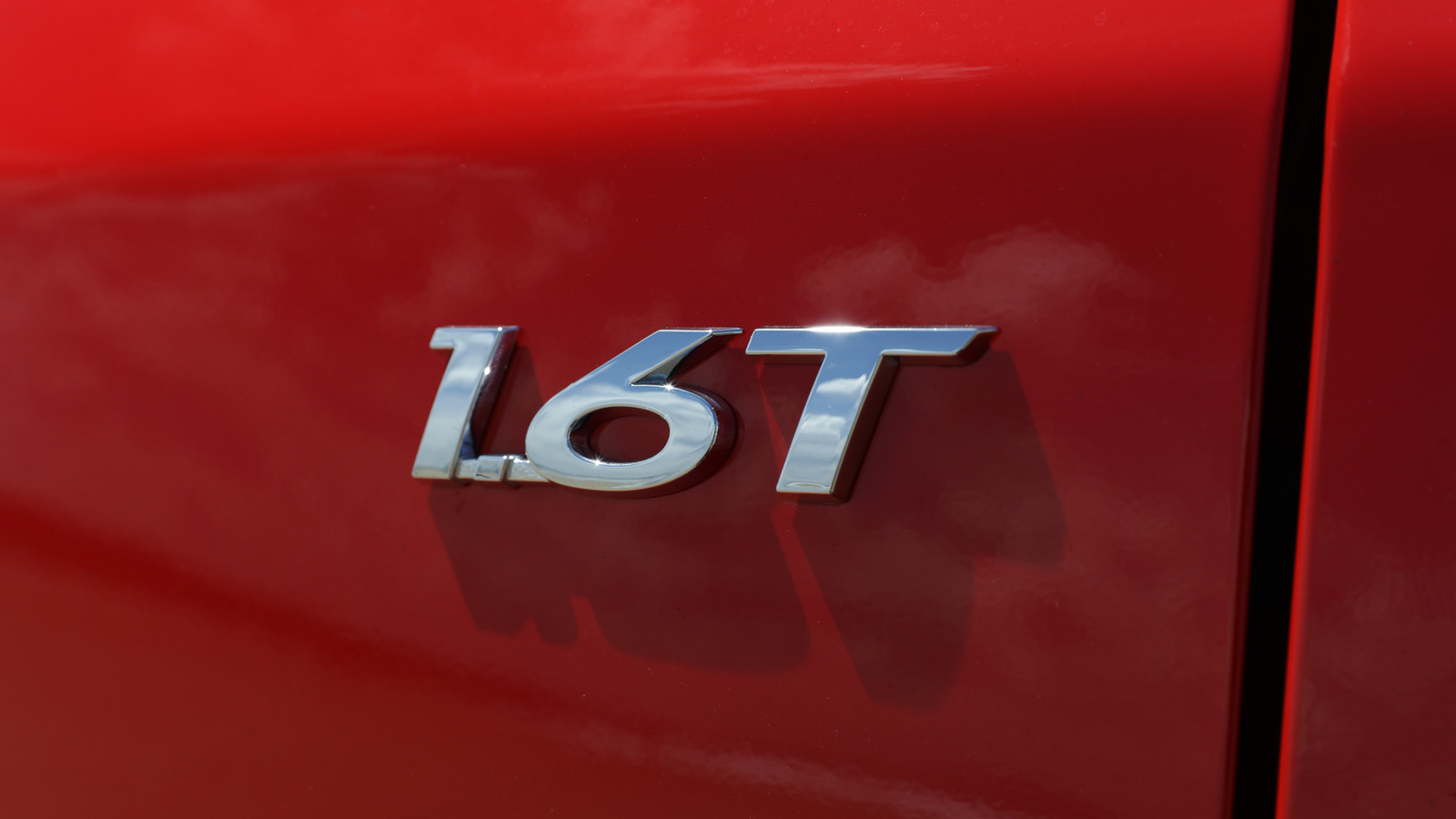
No matter: the 1.6T is still a good little motor, serving up sufficient energy in most driving situations for the Kona N Line to feel quick if not genuinely fast. The Kona N, with its 206kW/392Nm two-litre turbo, will fill the requirement for ‘fast’.
Certainly, the N Line blitzes the standard Konas for pace, making their combination of a 110kW/180Nm naturally aspirated two-litre and CVT automatic feel a tad underdone.
Sadly though, the N Line’s capacity to maintain momentum on a flowing, pitching country road is held back by the sluggish responses of the DCT automatic when you start asking too much of it.
Put simply, the Kona N Line’s ageing DCT is way off the crisp responses of a Volkswagen T-Roc 140TSI Sport or a Skoda Karoq 140TSI Sportline. Feed in throttle out of a corner and a shift might be seconds away.
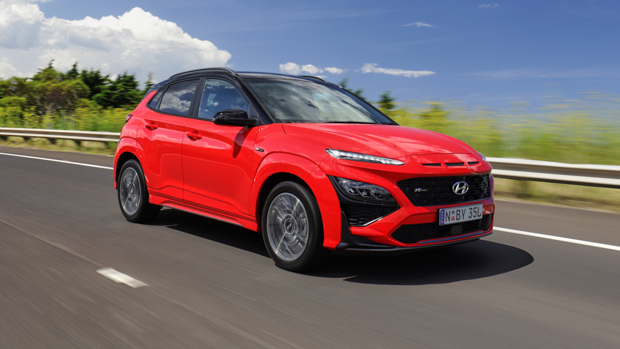
For a gearbox technology that is meant to be all about speedy shifts, the Kona N Line can leave you scratching your head – and by that point, the opportunity to power down a short straight piece of tarmac might be gone.
Adding insult to injury is the fact that – unlike the i30 N Line hatch – there are no paddle shifters, and the tiptronic function on the shifter is oriented incorrectly.
The DCT woes are a shame because the Kona N Line has a really creamy, exploitable chassis with good ride and handling characteristics. And when you catch it in the right gear, the N Line shines.
Turn-in is especially crisp, right up there with the new T-Roc, and there’s a good amount of body roll – enough to help the Kona point at the apex but then use passive rear steer to help rotate you through and out of the corner.
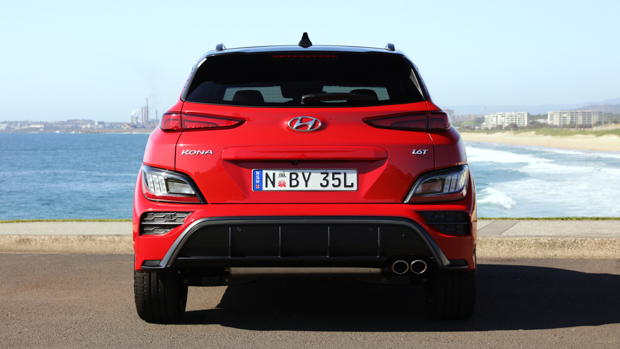
Dab the brakes to tighten up your line and the Kona responds cheerfully, with little bouts of lift-off and braking oversteer available to keen but smooth drivers.
All the while the N Line’s suspension package soaks up nasty potholes, expansion joints and mid-corner bumps with aplomb.
Great visibility and the tight dimensions add to the Kona’s virtues and dispel any lazy views that small SUVs can’t engage their driver on a good piece of Australian backroad.
Refinement is also decent, with the Kona N Line’s Continental PremiumContact tyres providing a good balance between acceptable grip and low-ish road noise.
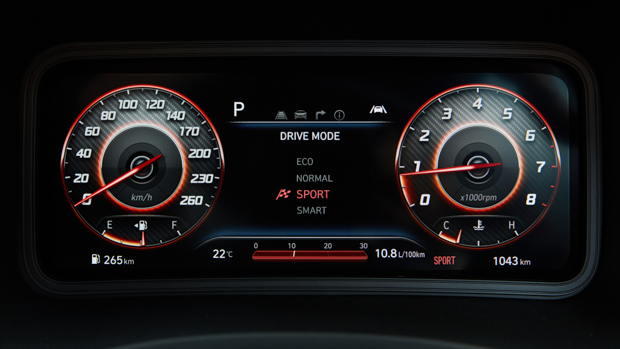
On the safety front, all Kona grades are fitted with frontal AEB with pedestrian, cyclist and vehicle detection. Full braking is possible to 85km/h and it’s partial beyond that. There’s also a rock-solid lane keeping assistant that keeps the Kona centred in the lane very well.
Adaptive cruise control is also standard, while higher grades – like the N Line Premium – pick up additional safety tech in the form of blind spot monitoring, and a rear cross traffic detection system that can apply the brakes when backing out of a parking spot.
Notably, however, no Kona is fitted with reversing AEB that can detect a stationary vehicle or pedestrian behind the car and stop automatically.
The 2021 Hyundai Kona update has resulted in some changes to this small SUV’s interior – though not all grades get the same changes.
Top-shelf N Line Premium and Highlander grades get a particularly impressive new display: a 10.25-inch high-definition widescreen touchscreen that sits proud on the Kona’s dashboard.
We like several things about this new screen: it’s considerably bigger and wider than the eight-inch unit on lower grades, so it fills out the space well. And because the resolution is high, you can put three panes of information side-by-side. Only this larger screen gets integrated satellite navigation.
Other Kona models, including the lower-end turbo N Line, score a smaller eight-inch touchscreen with shortcut buttons on either side.
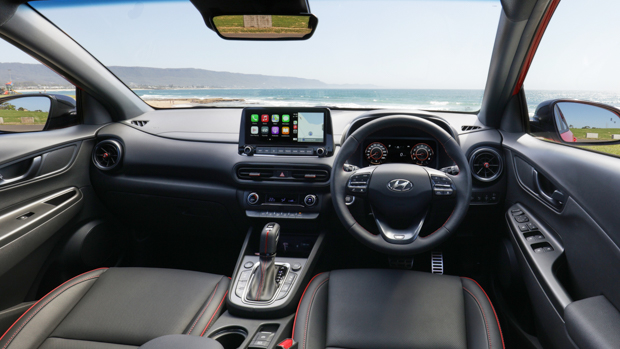
However, an odd specification choice arises when it comes to Apple CarPlay and Android Auto: the smaller screen has the wireless version of those technologies, while the bigger screen requires you to plug your phone in with a cable.
The reason behind this counterintuitive situation is that an undisclosed technology company has a demand for wireless CarPlay or wireless Android Auto that clashes with Hyundai’s own navigation system priorities.
Either way, it’s a bad outcome for buyers of these high-specification trims, and one Hyundai needs to sort out. It is the same story across a broad range of new Hyundai and Kia models, and it is the reason Genesis vehicles like the new GV80 do not have wireless CarPlay and wireless Android Auto.
That said, the technology to allow wireless connectivity exists within the system, and could theoretically be updated later on.
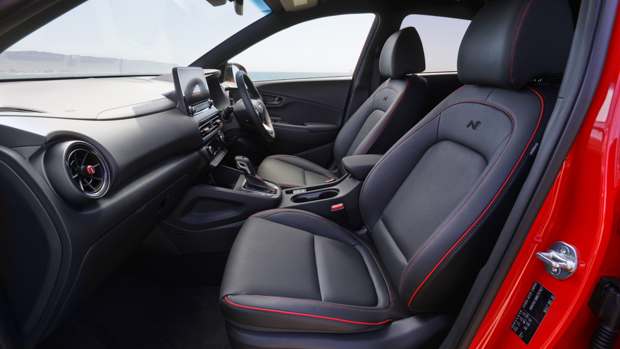
Models like the N Line Premium with the large touchscreen also score a 10.25-inch digital instrument cluster for the driver, which changes in appearance based on the drive mode – but unlike the similarly-priced Audi Q2, you can’t put a map there.
The rest of the Kona’s interior is well-built and fit for purpose. Build quality still feels solid and the materials used have been upgraded slightly, with the dashboard now sporting soft-touch plastics.
We found the Kona N Line Premium’s electrically-adjustable driver’s seat to be supportive and comfortable over a three hour drive through the New South Wales countryside. The sports seats are also heated and cooled – the latter of which was much appreciated on the hot day of our test.
Shame the passenger seat doesn’t nab height adjustment (or electric adjustment at all), though unlike in a Toyota RAV4 (which also lacks passenger height adjustment), the Kona’s high roofline means six-footers can still fit with adequate headroom.

The same is true for the back seat. The Hyundai Kona is a small SUV, with compact dimensions, but it is packaged quite efficiently. Two six-footers will fit in the second row with acceptable headroom, legroom, and toe room. Plus, there are air vents for hot days back there, and and a USB port to charge a device.
The Kona also offers a decent amount of boot space. At 374 litres, it’s considerably larger than the cargo area of a Mazda CX-3, even if it’s not as spacious in the boot as a Volkswagen T-Cross or Skoda Kamiq. And unlike that latter vehicle, the tailgate of the Kona is manual, even on the top of the range car – though you do get a net to stop belongings sliding around, and there’s a space saver spare wheel beneath the boot floor.
Among the Hyundai Kona range, the more sophisticated N Line models do have higher running costs – but their additional refinement and performance over the more basic grades do justify this, in our view.
In terms of fuel consumption, the turbocharged N Line variants are much quicker and more refined but they don’t really drink much more fuel.
On the launch drive of this SUV, we managed consumption of 9L/100km, which was only marginally higher than the more basic two-litre models.
That is more fuel than a Volkswagen T-Roc 140TSI Sport drinks – that car consumes about 8L/100km in the real world. But unlike the T-Roc, the Kona can be fuelled the most affordable 91 octane petrol.

Like all Hyundai models sold in Australia, the Kona comes with a five year, unlimited kilometre warranty.
At the time of writing, Hyundai Australia was still finalising service pricing for the facelifted Kona range.
The Kona requires a service every year or 10,000 kilometres. That mileage limit is a little short of the 15,000 kilometres that most vehicles can run between scheduled maintenance.
There’s no doubt that the 2021 update has made the Hyundai Kona a better small SUV in many ways.
The level of technology inside is now higher, and the spruce-up of the interior has worked well. Plus, the new design outside looks great, in our eyes.
In some ways it’s a shame that you can no longer option the turbocharged petrol engine and improved rear suspension across the entire range – that choice has now been deleted.
But either way, if you’re buying one of these small SUVs, the turbo models are still the way to go if the budget can stretch to a Hyundai Kona N Line or N Line Premium.
Variant tested N Line Premium (AWD) with two-tone roof
Key specs (as tested)
About Chasing cars
Chasing Cars reviews are 100% independent.
Because we are powered by Budget Direct Insurance, we don’t receive advertising or sales revenue from car manufacturers.
We’re truly independent – giving you Australia’s best car reviews.
The estimate provided does not take into account your personal circumstances but is intended to give a general indication of the cost of insurance, in order to obtain a complete quote, please visit www.budgetdirect.com.au. Estimate includes 15%^ online discount.
^Conditions Apply
Budget Direct Insurance arranged by Auto & General Services Pty Ltd ACN 003 617 909(AGS) AFSL 241 411, for and on behalf of the insurer, Auto & General Insurance Company Limited(ABN 42 111 586 353, AFSL 285 571).Because we don’t know your financial needs, we can’t advise you if this insurance will suit you. You should consider your needs and the Product Disclosure Statement before making a decision to buy insurance. Terms and conditions apply.
Indicative quote based on assumptions including postcode , 40 year old male with no offences, licence suspensions or claims in the last 5 years, a NCD Rating 1 and no younger drivers listed. White car, driven up to 10,000kms a year, unfinanced, with no modifications, factory options and/or non-standard accessories, private use only and garaged at night.
^Online Discounts Terms & Conditions
1. Discounts apply to the premium paid for a new Budget Direct Gold Comprehensive Car Insurance, Third Party Property Only or Third Party Property, Fire & Theft Insurance policy initiated online on or after 29 March 2017. Discounts do not apply to optional Roadside Assistance.
2. Discounts do not apply to any renewal offer of insurance.
3. Discounts only apply to the insurance portion of the premium. Discounts are applied before government charges, taxes, levies and fees, including instalment processing fees (as applicable). The full extent of discounts may therefore be impacted.
4. We reserve the right to change the offer without notice.